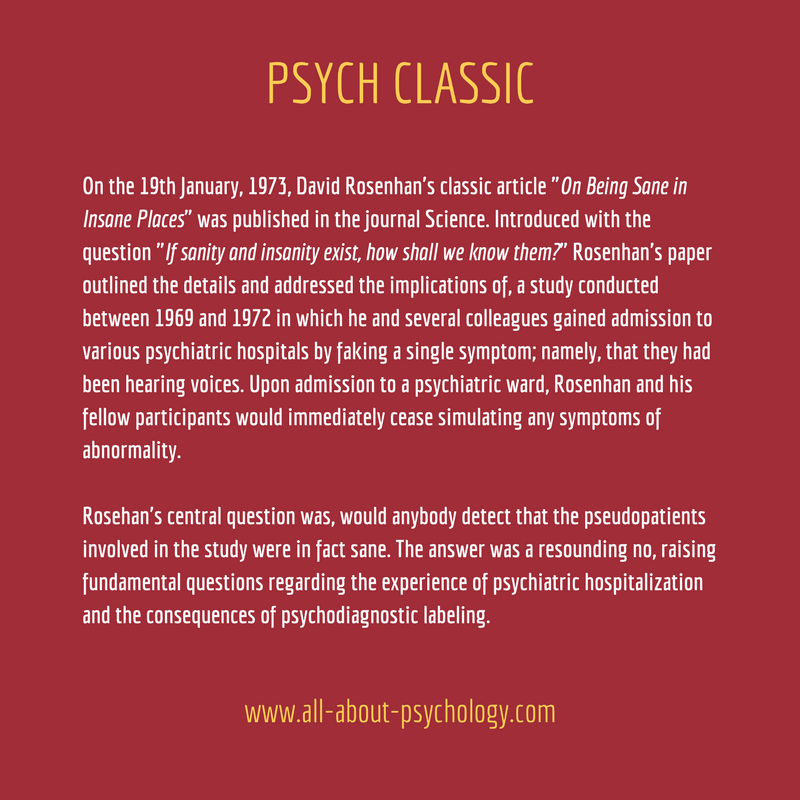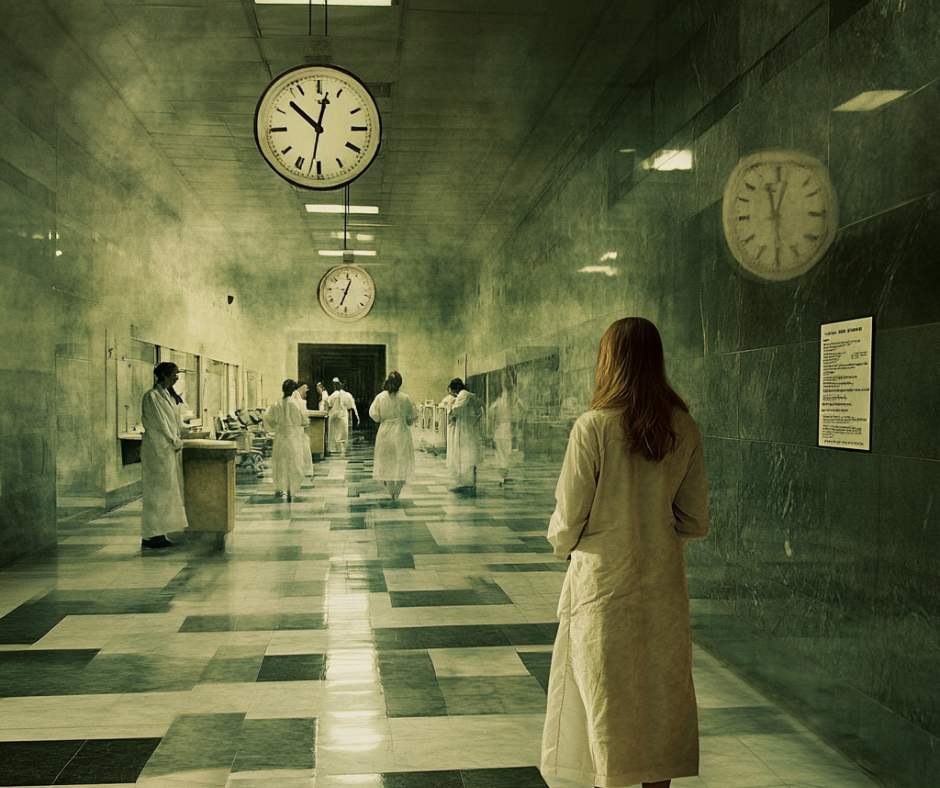Impostors in the Asylum
Psychiatrists failed to distinguish the sane from the insane inside a psychiatric institution.
Curing Crime, Christian Orlic, Lucas Heili
David L. Rosenhan, an American psychologist, published a study in 1973 which found that psychiatrists and mental hospital staff were unable to detect pseudopatients from actual patients in a psychiatric hospital. His study continues to be widely cited and had a big impact on the field. Rosenhan wanted to test current psychiatric practices.
Gaining Admission:
Rosenhan and seven other people volunteered to take part in this study. They were to become pseudopatients. Each of them was assigned a pseudonym and those in mental health professions chose a different one so they would be treated like normal patients. These people did not have nor had ever “suffered symptoms of serious psychiatric disorders” (Rosenhan, 1973).
Each of them made an appointment to see a psychiatrist and said (lied) they were hearing voices. Those voices said: “thud”, “hollow”, and “empty” which were not associated with any known psychoses. Everything else they said was true. If asked whether they were faking, they had to say the truth.
The stakes were high
- If the hospital staff discovered the fake patients; this study would suggest that insanity is distinct and it can be successfully identified.
- If the fake patients were not discovered the experiment would suggest that the traditional method of diagnosis needs urgent revision.

What happened?
All seven of them were admitted to psychiatric hospitals and “were never detected”. Once inside, these pseudopatients ceased “simulating any symptoms” and behaved normally. These pseudopatients, like regular patients, were told that they would get out by “convincing the staff that [they were] sane”.
The subjects of the study experienced some nervousness, mostly because they expected to be discovered. Once admitted, some of them became anxious given the condition of their wards. They did not take their medications and noted that neither did many of the regular patients. They were surprised at how little they were observed. Quickly they got bored and made efforts to communicate with other patients and staff. The pseudopatients were very cooperative with staff as they wanted to get out.
They took notes about what they saw. Hospital staff interpreted this behavior as a sign of their mental illness.
The tagging of mental illness is one of the most concerning findings which this study revealed. The power of these labels compelled staff to interpret the patient’s actions as evidence of the diagnosis. Thus, contributing to their sense that they made the right diagnosis. The institutionalization, Rosenhan argued, entrenches diagnosis so that a behavior that would be seen as normal outside, suddenly becomes pathological inside an institution.
Surprisingly, real patients did notice something was amiss. Several of them challenged pseudopatients by asking them if they were reporters, investigators, or professors. All patients had limited interactions with hospital staff. Another study found that staff spends less than 11% of their time outside their offices. According to Rosenhan, the limited degree of interactions and hospital layout depersonalizes patients
Why does it matter?
All pseudopatients were released within two months. Most of them had been diagnosed as schizophrenics and were now schizophrenics in remission. Rosenhan argued that his experiment showed that it “is clear that we cannot distinguish the sane from the insane in psychiatric hospitals”.
Another hospital said that the results were invalid and could not be replicated at their institution. Rosenhan decided to carry out another experiment and told them that he would be sending pseudopatients. None were sent, yet during the next three months:
- Forty-one patients were alleged to be pseudopatients by one staff member.
- Twenty-three patients were suspected by one psychiatrist.
- Nineteen were suspected by a psychiatrist and at least another staff member.
Conclusions
Rosenhan’s experiment occurred at a time when there was deep skepticism of psychiatry and psychology. This skepticism was expressed by even members of the profession, like Thomas Szaz who alleged that psychology was a pseudoscience and that mental illnesses were not real. Another psychiatrist, R.D. Laing suggested that insanity was a rational reaction to an insane world. Finally, Ken Kesey’s One Flew Over the Cuckoo’s Nest demonstrates that the critique of these sciences had become pervasive.
Rosenhan argued that diagnostic processes needed to be revised because any system that “lends itself so readily to massive errors of this sort cannot be a very reliable one”. The study highlights staff members as smart, caring, and professional and yet strongly implies they fail spectacularly. Rosenhan also highlighted that “what is viewed as normal in one culture may be seen as quite aberrant in another”. We argue that time is yet another dimension which can change whether something is seen as normal.
Scientific Malpractice?
In the past few years, 2019-, Rosenhan has been accused of making up much of the data and the experiment. A journalist (Susannah Cahalan) and a historian (Andrew Scull) have examined Rosenhan’s records and conclude it was likely a hoax. Cahalan tracked one of the pseudopatients who remembered hospital staff being caring which contradicted Rosenhan’s view of hospitals as harmful places.
Despite these misgivings, the paper makes insightful points about the power of a diagnosis to shape how a person’s acts are interpreted. Moreover, a study in 1968 confirms that doctor preconceptions can affect their diagnosis. One man was recorded and the audio was played to two groups of psychiatrists. One group had been told the person looked neurotic but was quite psychotic whereas the other group had not been primed. The first group was more likely to diagnose psychoses (Termerlin).
Authors: Christian Orlic & Lucas Heili collaborated to produce this article.
All quotations in quotation marks come from Rosenhan’s originally paper, On Being Sane in Insane Places.
Want to read more great articles by these authors? Subscribe to their fascinating newsletter Curing Crime.
For students and teachers of psychology, Curing Crime offers a fascinating historical and ethical perspective on the intersection of science, medicine, and criminal behavior, making it a must-read for anyone interested in forensic psychology and the psychology of crime.

